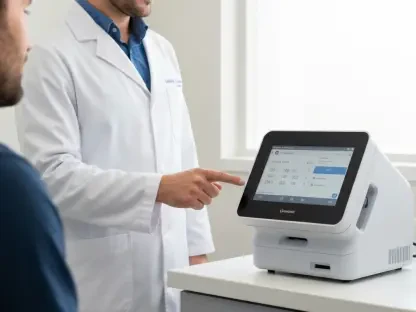Recent advancements in healthcare are uncovering surprising new uses for existing medications, and one prominent example is Ozempic (semaglutide). Originally hailed for its effectiveness in treating diabetes and aiding in weight loss, Ozempic is now being investigated for its potential to address alcohol-use disorder. This expanding role for the drug could revolutionize treatment options for addiction, providing a new lifeline for millions struggling with alcohol dependency.
Ozempic’s New Potential
In a groundbreaking study published in JAMA Psychiatry, researchers explored the potential of Ozempic to reduce alcohol consumption. The study, funded by the government, was the first clinical trial to indicate that GLP-1 drugs could play a significant role in mitigating the risks associated with excessive alcohol use. Previous animal studies and real-world data analyses had hinted at such a connection, but this study provided the first human evidence supporting the hypothesis.
The study involved 48 adults over two months, none of whom had diabetes or prior GLP-1 medication use. The results were promising, showing that Ozempic significantly lowered both alcohol cravings and drink consumption. Participants also reported a notable decrease in the incidence of heavy drinking compared to those who received a placebo. These findings suggest that Ozempic could serve as a novel approach to curbing alcohol-use disorder, potentially offering better outcomes than existing medications.
Addressing Alcohol-Use Disorder
Alcohol-use disorder is a pressing public health issue in the United States, affecting nearly 30 million people. The disorder poses significant health risks and contributes to 2.6 million deaths annually. Current treatment options are often limited in their effectiveness, underscoring the urgent need for new therapies. The promising results from the Ozempic study could mark a turning point in how alcohol-use disorder is treated.
The study engaged participants aged 21 to 65, and the results were striking. Not only did Ozempic reduce alcohol cravings and consumption, but it also appeared to shift drinking patterns more favorably than existing medications. The potential for Ozempic to help those struggling with alcohol-use disorder is particularly significant given the limitations of current treatments. If further research confirms these findings, Ozempic could become a cornerstone in the management of alcohol-use disorder, offering hope to millions.
Broader Applications of GLP-1 Drugs
The implications of GLP-1 medications like Ozempic extend beyond alcohol-use disorder. Preliminary research suggests that these drugs may also reduce cravings for other addictive behaviors, such as smoking, opioid use, gambling, and even compulsive shopping. These effects are thought to result from the influence of GLP-1 drugs on the brain’s reward pathways, which play a crucial role in addiction.
Small subgroups in the Ozempic study showed reduced smoking habits, hinting at broader applications for managing addictive behaviors. Pharmaceutical company Eli Lilly is taking these findings seriously and plans to initiate large-scale clinical trials in 2025 to examine the full scope of GLP-1 drugs’ effects on addiction. If these trials are successful, the medical community could see a widespread adoption of GLP-1 medications for various forms of addiction, offering a multifaceted tool for tackling one of the most challenging aspects of public health.
Telehealth Prescription Concerns
While the potential new uses for Ozempic are exciting, they also raise important questions about how these medications are prescribed, particularly in the context of telehealth. A survey conducted by Omada Health revealed significant unease among primary care physicians regarding the trend of patients obtaining GLP-1 prescriptions from third-party telehealth providers. The primary worry is that these practices could lead to overprescription and a lack of comprehensive patient care.
Nearly 2,000 primary care doctors participated in the survey, and less than 20% expressed comfort with third-party telehealth prescriptions. Two-thirds voiced concerns that such practices might jeopardize patient health due to overprescription and insufficient follow-up care. These findings highlight the need for tighter regulations and more integrated care approaches to ensure the safe and effective use of GLP-1 medications.
Compounded GLP-1 Medications
Another area of concern related to GLP-1 medications involves compounded drugs, which have become particularly controversial amid current drug shortages. Some physicians find compounded GLP-1 drugs useful as a temporary solution, but about 45% believe they do not offer a sustainable long-term option. The lack of regulation and potential for inconsistent dosing make many doctors hesitant to prescribe these alternatives regularly.
The medical community’s caution regarding the proliferation of telehealth prescriptions and compounded medications underscores the complexities involved in modern healthcare delivery. As the use of GLP-1 medications expands, it will be crucial to balance innovation with patient safety, ensuring that new treatments are both effective and responsibly managed.
Economic Challenges with Sickle Cell Gene Therapies
Beyond the realm of GLP-1 medications, the healthcare sector is grappling with economic challenges related to other groundbreaking treatments, such as sickle cell gene therapies. The FDA’s approval of these therapies has promised significant advancements for patients, but it also introduces substantial cost challenges. Over half of all sickle cell patients rely on Medicaid, placing a significant financial burden on both public and private health insurers.
Managing the high costs associated with these breakthrough treatments is a pressing concern for healthcare providers and policymakers. Strategies are needed to balance the expansion of coverage with the limitations of budget constraints. This challenge highlights the broader issue of ensuring that innovative treatments remain accessible and sustainable within the healthcare system.
Summarized Findings and Trends
The exploration of Ozempic’s potential beyond diabetes treatment represents a significant advancement in addiction medicine. The drug’s ability to reduce alcohol cravings and consumption could provide a new, more effective treatment for alcohol-use disorder. Furthermore, the broader applications of GLP-1 medications for other addictive behaviors offer a promising avenue for future research and clinical trials.
At the same time, the rise of telehealth prescriptions and the use of compounded GLP-1 drugs raise important questions about patient safety and the need for comprehensive care. As the healthcare sector continues to evolve, it will be essential to implement tighter regulations and more integrated approaches to ensure that new treatments are administered responsibly.
Finally, the economic challenges associated with sickle cell gene therapies underscore the need for innovative funding solutions. Balancing the costs of groundbreaking treatments with the realities of healthcare budgets will be crucial to ensuring that all patients can benefit from these advancements. The ongoing dialogue between medical innovation, patient care, and economic viability will continue to shape the future of healthcare delivery.
Objective Analysis
Recent advancements in healthcare are revealing unexpected new applications for existing medications, with Ozempic (semaglutide) standing out as an example. Originally celebrated for its efficacy in treating diabetes and facilitating weight loss, Ozempic is now being researched for its potential to manage alcohol-use disorder. This new role could profoundly transform addiction treatment options, offering fresh hope to millions grappling with alcohol dependency. As researchers delve deeper into these alternative uses, the potential for medications like Ozempic to address multiple health issues becomes increasingly evident. This multi-faceted approach not only exemplifies medical innovation but also highlights the adaptability of existing drugs to treat diverse conditions. The evolving landscape of medication repurposing promises a new frontier in holistic healthcare, potentially making significant strides in improving overall patient outcomes.









